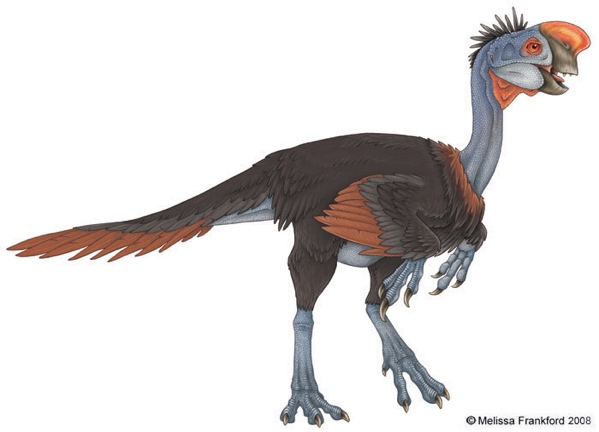
General Information
One of the true theropods, moving on two powerful hind legs, is Oviraptor. The reptile lived during the Late Cretaceous in what is now Central Asia, or more precisely, Tajikistan and Mongolia. A unique feature of this species was the presence of a crest on its head, which made the Oviraptor look like a rooster, a cassowary, or a parrot. The name of this animal comes from the Latin for eggs, which is related to the specific system of caring for offspring and paleontological findings, including the cast of a clutch of eggs in the nest. Specifically, Oviraptor adults formed a high pile of sand, earth, and grass where the animal eggs were planted.
The care of offspring in Oviraptor took place not only during the incubation of eggs but also after they hatched. Feathers covered most of the body of this ancient reptile, and Oviraptor had a small fan of bright feathers on the end of the body, in the area of the tail, which was, apparently, a tool for attracting partners. Oviraptors lived in the dry, warm climate of desert conditions, which made the theropod an omnivore: as food, Oviraptors used plants, small reptiles and snakes, and mollusks. There is also evidence that Oviraptor may have fed on the eggs of other reptiles.
Skull structure
The distinctive feature of the Oviraptor skull is considered to be the presence of a bony ridge covering the upper face and posterior part of the skull. The length of the skull is small and only 20 cm. This reptile had no true teeth, but it had a well-developed beak, with the help of which Oviraptor could break the hard shells of eggs. The skull revealed rather large openings for the eyes. Such a deepening of the eyeballs may indicate their additional protection due to the use of the head comb as a “hammer” to inflict damage on victims.
Structure of the postcranial skeleton
Oviraptor body length could reach 2.5 m with a body mass of 20-25 kg. It had powerful hind paws and well-developed fore paws: the number of toes was three, and each of them ended with an exceptionally long claw. It is thought that the forelegs of Oviraptor had wing-like feathers, but this is not known for sure. The ribs of Oviraptor had tiny hooks that stimulated the movement of the respiratory sacs. Thus, air first entered the animal’s throat and then was pushed into the lungs, as it is in warm-blooded mammals and birds.